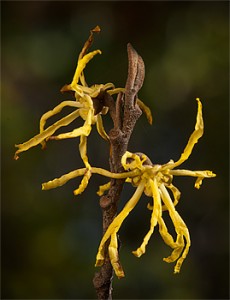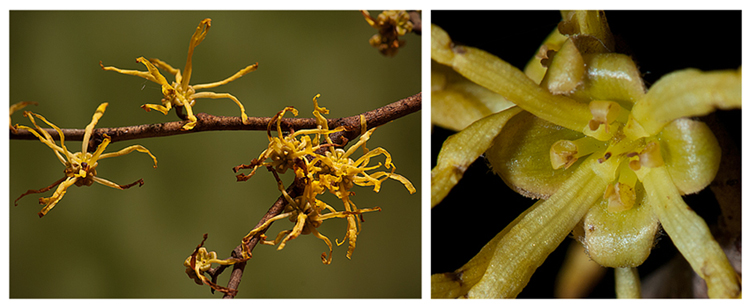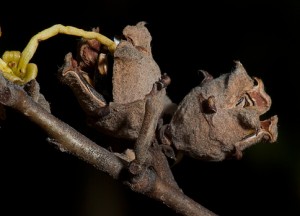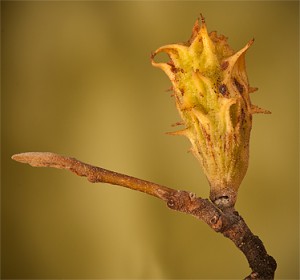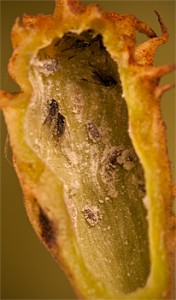Witch-hazel (Hamamelis virginiana) is a large shrub or small tree that blooms in the fall in Michigan. It grows in the Lower Peninsula and the western half of the Upper Peninsula. Outside of Michigan, it grows throughout the eastern United States reaching its western limit in Texas and Oklahoma. It is the last of our native woody plants to blossom. The flowers appear in most years after the plant has dropped its leaves. The yellow flowers with their four wiry petals form a pretty sight in the fall woods.
The seeds ripen about the same time as the plant flowers. The seedpods shoot the seeds ten to fifteen feet. When I was a boy in Middle School, I had a Witch-Hazel branch with seedpods in my bedroom. (Doesn’t every boy go through this stage?) During the night, I heard a strange “Ping.” The seedpods were drying out and shooting their hard BB-sized seeds against my bedroom mirror.
This plant also produces Spiny Witch-hazel Galls. An aphid crawls into a leaf bud and secretes an enzyme. The irritation causes the plant to produce the gall around the aphid. The aphid reproduces within the gall and the gall provides a food source for the young. The life-cycle is more complex than this involving a secondary plant species host and some broods that are solely females. I cut open a gall from my garden, expecting it to be solid, but instead I discovered it was hollow. Several female aphids (the ones with wings) and at least one male were inside.
I love to see these flowers on their bare branches as I walk though the fall woods. Get out into a rich woods and see if you can find these last flowers of the year.

